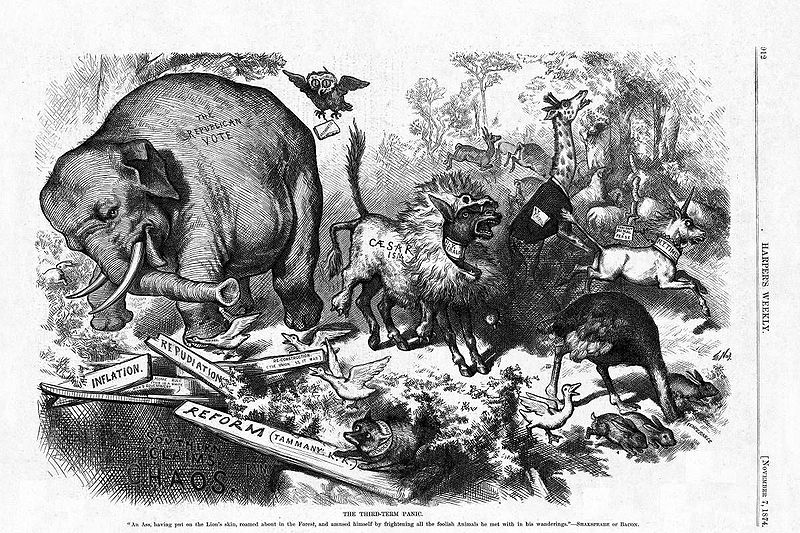In Quillette, Jack Reilly outlines the rise of political cartooning from (of all people) Martin Luther to the present day, as it faces the final phase of its long career:
The first influential cartoon published in an American newspaper has traditionally been credited to Benjamin Franklin, who drew his famous serpent divided into eight parts with the legend Join, or Die — the message being that fellow colonists must band together to repel the enemy forces then threatening their territory. Long after Franklin’s death, the image would be dusted off for reuse by supporters of American unity.
Thomas Nast, whom many consider to be the greatest editorial cartoonist of all time, rose to prominence during the Civil War. Still in his early 20s, the young German immigrant began producing such arresting pro-Union material that Abraham Lincoln — flipping Napoleon’s rueful commentary about James Gillray on its head — referred to Nast as “our best recruiting agent.”
During the national election of 1864, conducted amidst the Civil War, the Democrats pushed a platform of reconciliation with the slaving south. In response, Nast created his famous Compromise with the South cartoon, depicting an injured union soldier, bowing his head and lifelessly shaking hands with a victorious confederate who stands atop the grave of a fallen Yankee, with Lady Liberty weeping in the foreground. The epitaph on a tombstone reads “In memory of the Union heroes who died in a useless war.” Nast’s lurid but masterful image created a sensation, and showed how politically powerful the cartooning medium could be in an age of mass newspaper readership. Two months later, Abraham Lincoln defeated the Democrat candidate, George McClellan, to secure a second term.
In the decades following the war, Nast would continue to elevate the medium to high art. In 1871, he began an ongoing series for Harper’s Weekly attacking the corruption of Tammany Hall, the Democratic political machine that controlled New York politics. Nast so mercilessly lampooned William M. “Boss” Tweed as the machine’s ringleader, that Tweed was heard to rage, “Stop them damn pictures! I don’t care a straw for your newspaper articles. My constituents can’t read. But they can’t help seeing them damn pictures!”
Eventually, Tweed was convicted of money laundering. (He attempted to escape justice by absconding to Spain, but was soon apprehended by Spanish officials, who reportedly recognized him with assistance from Nast’s cartoons.) As for Nast himself, he’d go on to conceive of the elephant as a symbol for the Republican party, popularize the use of the donkey for the Democrats, and help create the modern image of Santa Claus that Americans have come to love.

“The Third-Term Panic”, by Thomas Nast, originally published in Harper’s Magazine on 7 November 1874.
A braying ass, in a lion’s coat, and “N.Y. Herald” collar, frightening animals in the forest: a giraffe (“N. Y. Tribune”), a unicorn (“N. Y. Times”), and an owl (“N. Y. World”); an ostrich, its head buried, represents “Temperance”. An elephant, “The Republican Vote”, stands near broken planks (Inflation, Repudiation, Home Rule, and Re-construction). Under the elephant, a pit labeled “Southern Claims. Chaos. Rum.” A fox (“Democratic Party”) has its forepaws on the plank “Reform. (Tammany. K.K.)” The title refers to U.S. Grant’s possible bid for a third presidential term. This possibility was criticized by New York Herald owner and editor James Gordon Bennett, Jr.
Image and caption via Wikimedia Commons.




